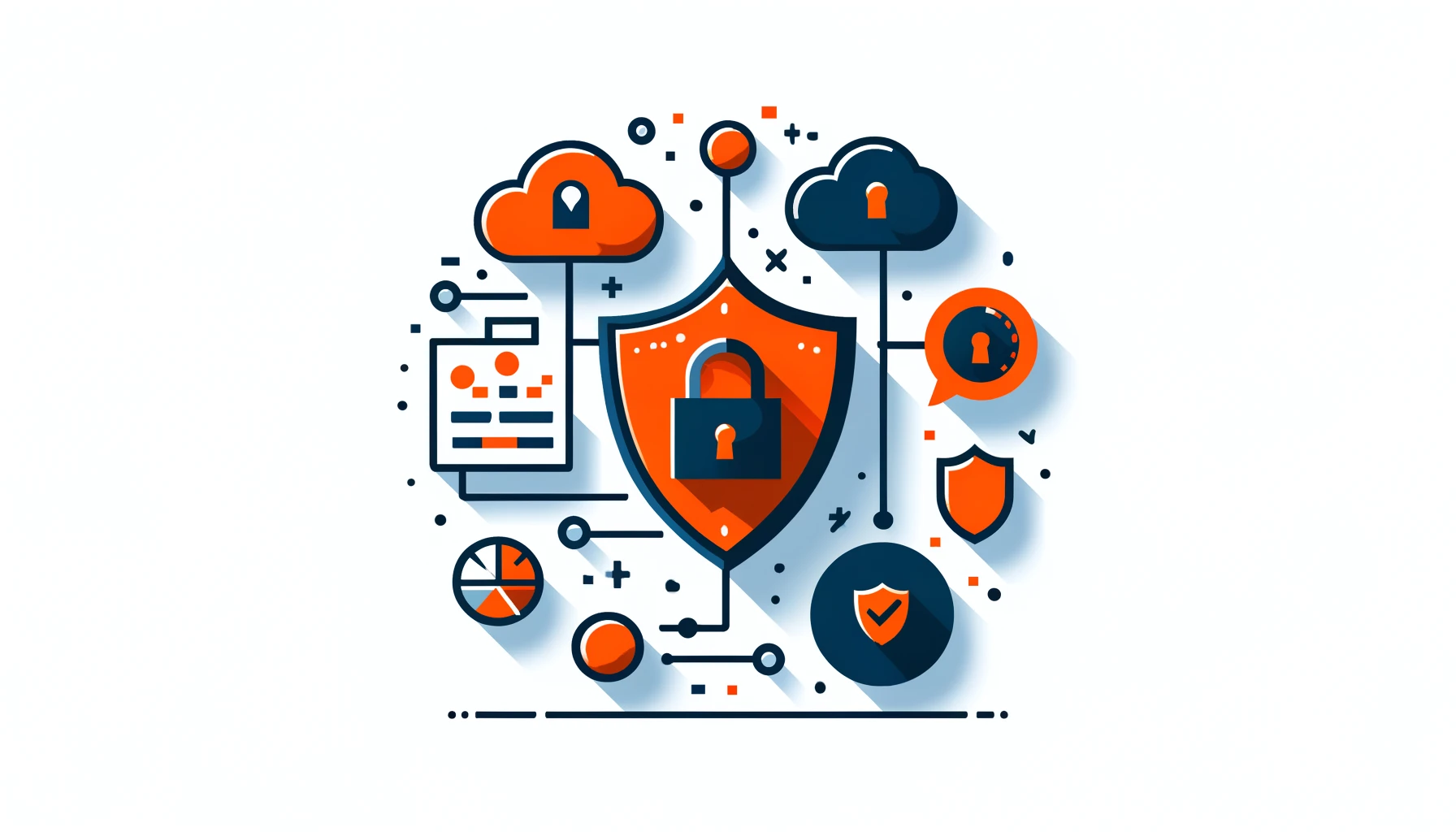
Data Security Management

In today’s digital age, data has become one of the most valuable assets for organizations. As technology and the internet become more common, it is important to focus on keeping sensitive information safe. This is where Data Security Management comes into play. This article will cover its basics of Data Security Management, why it’s important, and the software options available.
What is Data Security Management?
Data Security Management refers to the process of protecting digital information from unauthorized access, corruption, or theft throughout its lifecycle. It involves implementing a set of policies, procedures, and technologies to ensure the confidentiality, integrity, and availability of data. The primary goal of Data Security Management is to safeguard sensitive information. This could be personal data, financial records, and intellectual property, from cyber threats and data breaches.
The Importance of Data Security Management
Data Security Management has become increasingly important in recent years due to several factors:
- Cyber Threats: With the proliferation of cyber-attacks organizations are at a higher risk of data breaches. A single security incident can result in significant financial losses, reputational damage, and legal consequences.
- Regulatory Compliance: Many industries are subject to strict data protection regulations, such as GDPR, HIPAA, and PCI DSS. Failing to comply with these regulations can lead to hefty fines and legal action.
- Customer Trust: Customers entrust organizations with their personal information, expecting it to be safe. A data breach can erode customer trust and loyalty, leading to a loss of business.
Software Solutions for Data Security Management
To effectively manage data security, organizations can leverage various software solutions available in the market. Some popular options include:
- Data Encryption Software: Encryption is the process of converting plain text into a coded format. It makes the text unreadable to unauthorized individuals. Data encryption software, such as VeraCrypt and AxCrypt, helps protect data both at rest and in transit.
- Data Loss Prevention (DLP) Software: DLP software monitors and controls the movement of sensitive data within an organization. The examples are Symantec DLP and McAfee DLP. This software can detect and prevent unauthorized data transfers, accidental data leaks, and intentional data theft.
- Identity and Access Management (IAM) Solutions: IAM solutions help manage user identities and control access to resources. They ensure that only authorized individuals can access sensitive data based on their roles and permissions. We name Okta and Azure Active Directory, for example.
- Security Information and Event Management (SIEM) Tools: SIEM tools (Splunk and IBM QRadar). This software collects and analyzes security logs from various sources. They allow detect and respond to security incidents in real-time. They provide a centralized view of an organization’s security posture.
Zero Trust Security Models
Modern data security increasingly adopts Zero Trust principles. Zero Trust assumes no user or system is trustworthy by default. Every access request requires strict verification regardless of location. Authentication occurs continuously throughout user sessions. Network segmentation limits damage from potential breaches. Micro-segmentation divides networks into isolated security zones. Least privilege access grants minimal permissions needed for job functions. Security posture validation happens in real-time. Traffic encryption protects data even on internal networks. Every data transaction requires explicit verification. Behavioral analytics detect unusual patterns indicating potential threats. Zero Trust eliminates traditional network perimeters entirely. Organizations gain improved security against both external attacks and insider threats.
Examples of Data Security Management in Action
Let’s consider a few examples to illustrate the importance and effectiveness of Data Security Management:
Healthcare Industry
Data Security Management is important for healthcare organizations, especially hospitals. They protect sensitive patient health records from unauthorized access and data breaches.
Hospitals can keep patient data safe by using encryption software. This makes the data unreadable to anyone who doesn’t have the right key to decrypt it. This adds an extra layer of security to prevent data breaches and cyber attacks.
Hospitals depend on special software to protect patient information and manage the data sharing. This software helps stop unauthorized access to health records. It also can detect breaking the rules for data sharing.
Hospitals use special software to protect patient information and control data sharing. This software prevents unauthorized access to health records and can detect unauthorized sharing. Hospitals can set up rules in the software to ensure only authorized individuals can access patient information.
Hospitals can comply with regulations like HIPAA by implementing data security measures to protect patient health information. Compliance with HIPAA regulations is essential for hospitals to avoid hefty fines and maintain patient trust.
Hospitals can reassure patients about the safety and confidentiality of their health records by implementing Data Security Management practices. Patients must feel confident that their data is safe. Building and maintaining patient trust is essential for the success and reputation of any healthcare organization.
Financial Services
IAM solutions, or Identity and Access Management solutions, are crucial for banks to protect sensitive financial information. The bank enhances customer data security by requiring users to provide multiple forms of identification before accessing it. This extra step helps ensure that only authorized individuals can access the data.
The bank increases security by requesting multiple forms of identification to prove identity and prevent unauthorized access. This process helps safeguard sensitive customer information from potential security breaches.
This could be something that they remember, like a password. It could also be something that they own, like a phone used for getting a code. Additionally, it could be something about them, such as a fingerprint or face scan.
Role-based access control is another important feature of IAM solutions for banks. This makes sure that employees can only use the information and systems they need for their job in the organization.” By limiting access in this way, the bank can reduce the risk of unauthorized access to sensitive data.
Overall, the use of IAM solutions helps the bank mitigate the risk of data breaches and financial fraud. The bank can protect customer data by controlling who can access and use it, which helps maintain trust in their services. Additionally, IAM solutions can help the bank comply with regulatory requirements and industry standards related to data security and privacy.
E-commerce
The online retailer has implemented Security Information and Event Management (SIEM) tools to enhance the security of their network. These tools continuously monitor the network for any suspicious activities, unauthorized access attempts, or potential security threats.
The store installed SIEM tools to alert them of abnormal user activity. This includes multiple failed login attempts and unusual data access. The tools trigger the alerts when they detect these behaviors.
In the event of a security incident, the SIEM tool automatically triggers an automated response. The SIEM tool can prevent a strange IP address from accessing the network when detected. This helps to prevent further unauthorized actions. Additionally, the security team immediately notifies of the incident so they can investigate further and take appropriate action to mitigate any potential risks.
The online retailer uses SIEM tools to monitor their network for security threats. They use these tools to respond quickly to any issues that arise. This helps to strengthen their overall cybersecurity posture and protect sensitive customer data from potential breaches.
Conclusion
Data Security Management is a critical aspect of any organization’s cybersecurity strategy. By implementing robust policies, procedures, and technologies, organizations can protect their valuable data from cyber threats, ensure regulatory compliance, and maintain customer trust. As cyber-attacks get better, it’s important to be proactive and use a complete approach to keeping data safe.
DataSunrise provides versatile tools for data security management, including security, audit rules, masking, and compliance. Our solutions provide a comprehensive approach to safeguarding sensitive data across various databases and cloud platforms.
To see how DataSunrise can enhance your organization’s data security, book an online demo with our team. We encourage you to take advantage of this opportunity. It will give you a better understanding of how DataSunrise can benefit your organization.
